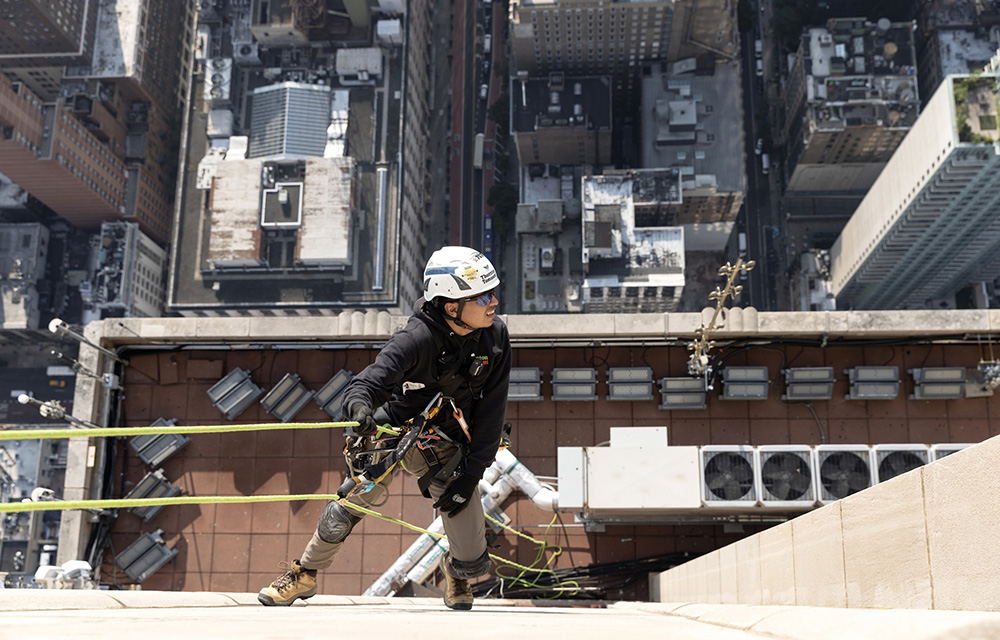News:
Construction Design & Engineering
Posted: July 11, 2011
Andrew Amorosi - Preventative maintenance/proper reconstruction: Protecting assets, ensuring stability
Every year, thousands of apartment units are added to the existing housing stock throughout the City. Many of these newer buildings are now 10 to 30 years of age or older, with the older buildings being well over 100 years old. Countless numbers of these buildings have undergone large construction projects of one type or another. Some of these construction projects have become due earlier than anticipated or have become tremendously more expensive because preventative maintenance was not performed over the years or the original construction was deficient.
Many of today's newer building components were (are) advertised as "maintenance free." Some building components may be intended to be maintenance free; however, original construction problems, manufacturing defects, interaction at adjacent components, or even inferior materials account for the inaccuracy of the "maintenance free" building.
While periodic capital reserve funding analyses typically recommend the anticipated replacement dates (useful lives) of many of the larger, common items, continued proper maintenance is required to achieve these life cycles. Too often, the maintenance effort is only the result of an encountered problem and not a preventative effort. When a replacement project becomes due, proper reconstruction methods and materials are essential to prevent premature replacements, and continued maintenance is needed to ensure this schedule.
Preventative maintenance, when performed properly and regularly, preserves the initial investment. Additionally, preventative maintenance is significantly less costly and disruptive than replacing or repairing major components that have failed prematurely.
To the apartment owner, this means having the reassurance that their home is being constantly maintained as a whole and that, at some point in the future, they will not be assessed hundreds or even thousands of dollars for the replacement or repair of some component of the property, the dreaded "special assessment."
To the property manager, this means assurance and peace of mind that their properties are being maintained, and not having to deal with future catastrophic events, angry homeowners, and Board members.
In short, an ongoing preventative maintenance program (PMP) and properly scheduled and implemented reconstruction project can assure a stable community, both physically and financially.
Although each building is unique and will have its own special requirements, there are typically several key elements that make up a comprehensive PMP. They are, in effect, a series of smaller programs for each of the major items, combined with a checklist of conditional inspections of all items on a property. Some examples of potential issues are listed below:
* Roof: Flat, steep, or combined, is often the most crucial or most prevalent because, when there is a problem with the roof covering, the occupant below whose roof is problematic typically knows immediately. One important step in roof maintenance includes regular rooftop inspections. For example, ponding water on a flat roof will likely lead to leaks and damage to the structure.
* Cladding and Fenestration: Similar to the roof, these items make up a particularly common component of the PMP because of two reasons- the first being aesthetics, and the second being a weather barrier. Depending on the type of cladding, a program of pointing, replacement and/or caulking may be necessary. Deteriorated seals can lead to structural damage and water infiltration. Improper original installation, lack of caulk joint maintenance or lack of timely pointing may cause this condition.
* Site drainage: The site drainage maintenance begins at the building, with clean gutters and leaders and positive grades away from the buildings. The main drainage components and pipes should be periodically checked and repaired as needed. Ponding water can deteriorate pavement, resulting in water infiltration and damage to subterranean components such as garages and vaults.
* Concrete: Tripping hazards and other concrete deficiencies should be replaced for safety and liability reasons as well as aesthetics to the property.
* Plazas and Parking Garages: Plazas and garages are very important components of the maintenance planning in a PMP, and are perhaps the most important in terms of safety, liability and long-term potential reconstruction costs.
The above are only a few examples of real and potential deficiencies within the common elements of a property. Whether these issues are the result of inferior original construction or lack of proper maintenance, they need to be addressed. A detailed qualified inspection and preventative maintenance program should be an integral part of any program to secure the value of a property. Periodic inspections and continued implementation of this program is crucial. Proper specifications, methods and materials for all replacement projects are needed to avoid future issues. While "maintenance free" is not exactly realistic, "problem free" is a realistic goal.
Andrew Amorosi, P.E., R.S., is principal for The Falcon Group, Bridgewater, N.J.
MORE FROM Construction Design & Engineering
NYC mayor and DOB release comprehensive façade inspection and safety study conducted by Thornton Tomasetti
Manhattan, NY New York City mayor Eric Adams and New York City Department of Buildings (DOB) commissioner Jimmy Oddo released the full recommendations from a comprehensive engineering study conducted by global engineering firm Thornton Tomasetti

Quick Hits







.gif)
.jpg)

.gif)